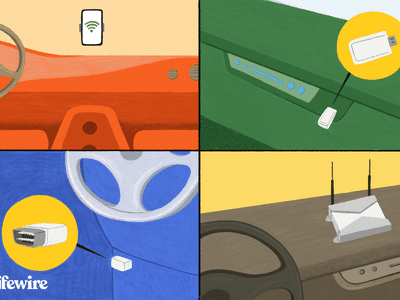
Troubleshooting and Repairing Non-Detected Sound Cards in Windows Systems - PixelPrecision Computers

Tutor]: To Find the Value of (B ), We Need to Isolate (B ) on One Side of the Equation. We Can Do This by Multiplying Both Sides of the Equation by 6, Which Is the Inverse Operation of Division by 6. Here Are the Steps:
The Windows 10 display settings allow you to change the appearance of your desktop and customize it to your liking. There are many different display settings you can adjust, from adjusting the brightness of your screen to choosing the size of text and icons on your monitor. Here is a step-by-step guide on how to adjust your Windows 10 display settings.
1. Find the Start button located at the bottom left corner of your screen. Click on the Start button and then select Settings.
2. In the Settings window, click on System.
3. On the left side of the window, click on Display. This will open up the display settings options.
4. You can adjust the brightness of your screen by using the slider located at the top of the page. You can also change the scaling of your screen by selecting one of the preset sizes or manually adjusting the slider.
5. To adjust the size of text and icons on your monitor, scroll down to the Scale and layout section. Here you can choose between the recommended size and manually entering a custom size. Once you have chosen the size you would like, click the Apply button to save your changes.
6. You can also adjust the orientation of your display by clicking the dropdown menu located under Orientation. You have the options to choose between landscape, portrait, and rotated.
7. Next, scroll down to the Multiple displays section. Here you can choose to extend your display or duplicate it onto another monitor.
8. Finally, scroll down to the Advanced display settings section. Here you can find more advanced display settings such as resolution and color depth.
By making these adjustments to your Windows 10 display settings, you can customize your desktop to fit your personal preference. Additionally, these settings can help improve the clarity of your monitor for a better viewing experience.
Post navigation
What type of maintenance tasks should I be performing on my PC to keep it running efficiently?
What is the best way to clean my computer’s registry?
Also read:
- [New] 2024 Approved Best 9 Online Mic Recorders
- [Updated] Dive Into the World of YouTube Shorts Mastering Video Creation for 2024
- Customize Your Experience: Easily Modify System Languages and Locale in the Control Panel with YL Software Insights
- Full Guide to Catch 100 IV Pokémon Using a Map On Motorola Moto G84 5G | Dr.fone
- In 2024, Pokemon Go Error 12 Failed to Detect Location On Realme Narzo N55? | Dr.fone
- Mastering Audio Repairs with YL Computing's Pro Tips - Uncover the Secrets to Perfect Sounds
- Mastering Your PC's Configuration: A Step-by-nStep Guide Through the Windows Control Panel - Expertise by YL Software
- Raoul Pal Warnings: Explosive Growth in M2 Supply May Pull Crypto Into an Unstoppable 'Supermassive Black Hole' - YL Software Analysis
- Recognizing Signs: How to Identify a Malfunctioning Computer Power Unit - Insights From YL Computing
- Stay Connected Anywhere with TP-Link's Compact and Easy-to-Carry Wireless AC Router (WR90 2AC)
- The Best Cloud Storage for Your Photos Free and Paid Included for 2024
- The Djinn's Gin | Free Book
- Understanding the Compliance Hurdles in Cryptocurrency Adoption: Insights From YL Computing's Perspective
- Title: Troubleshooting and Repairing Non-Detected Sound Cards in Windows Systems - PixelPrecision Computers
- Author: Paul
- Created at : 2025-03-01 16:00:29
- Updated at : 2025-03-07 16:01:16
- Link: https://fox-metric.techidaily.com/troubleshooting-and-repairing-non-detected-sound-cards-in-windows-systems-pixelprecision-computers/
- License: This work is licensed under CC BY-NC-SA 4.0.